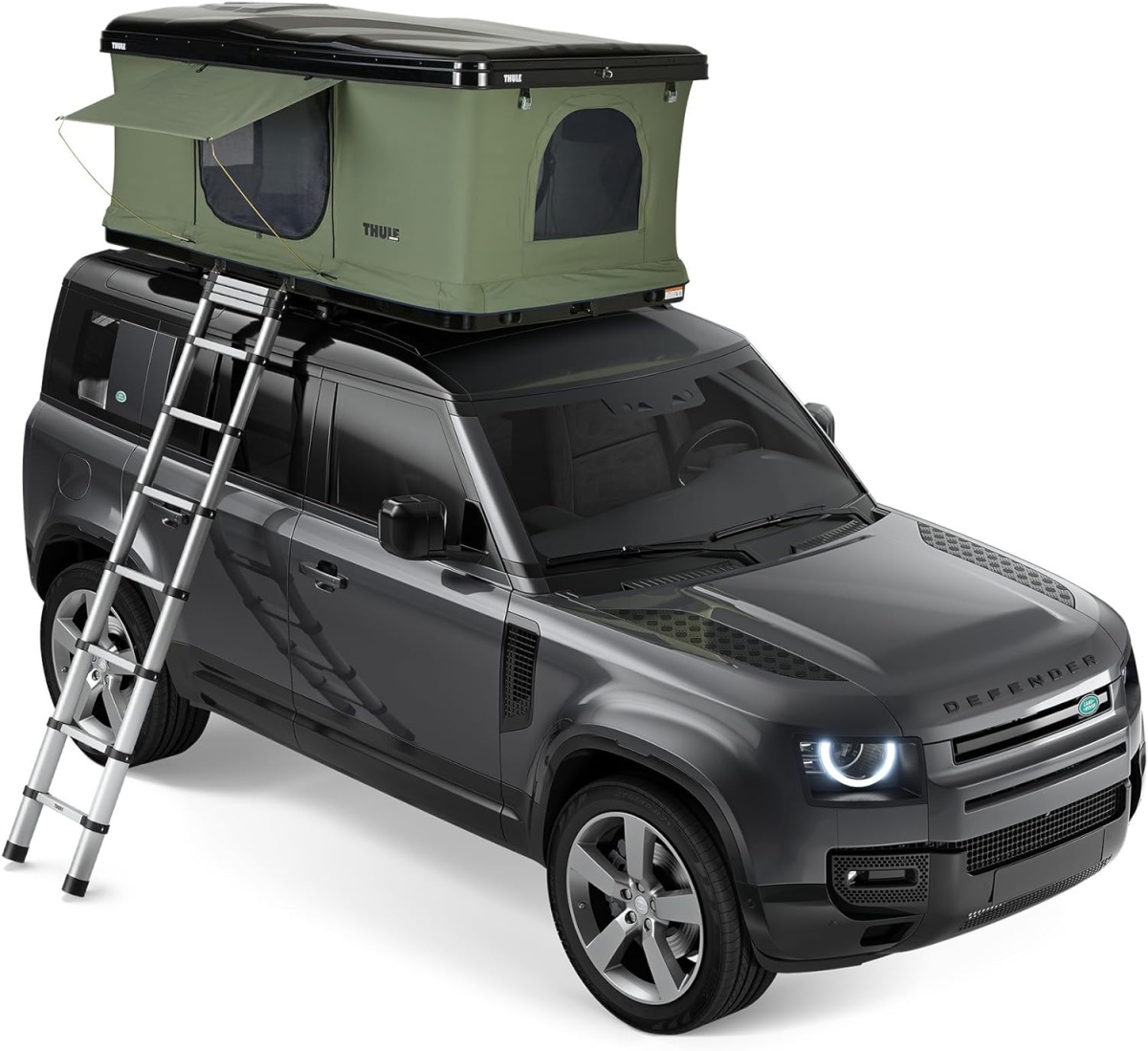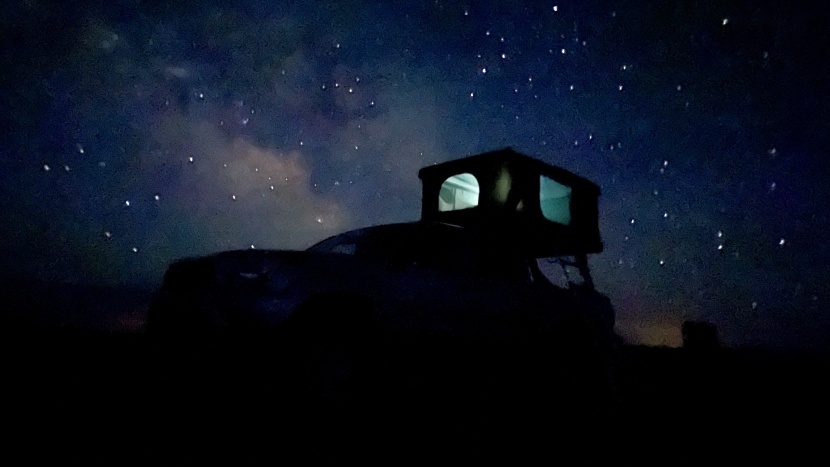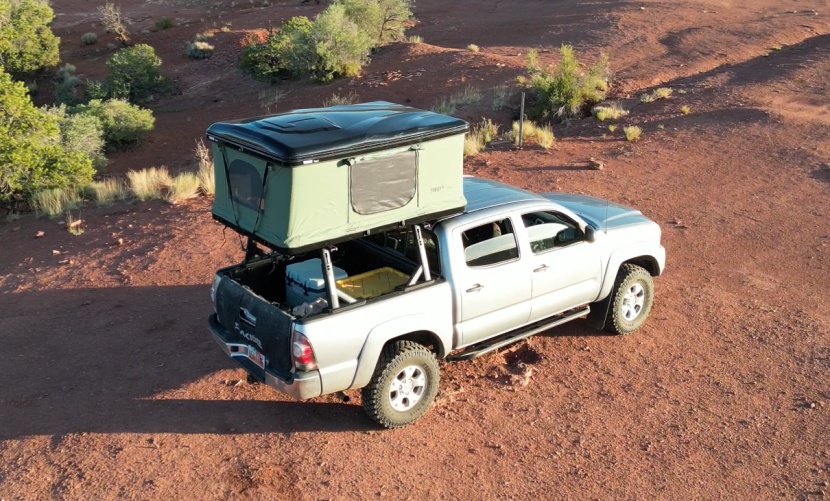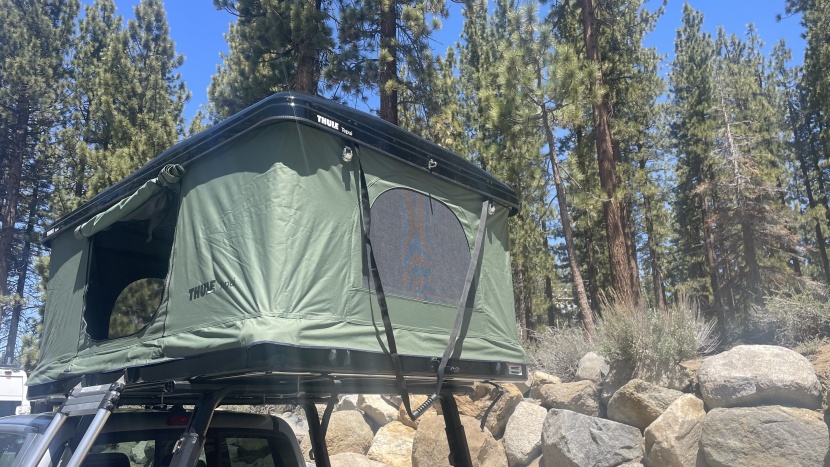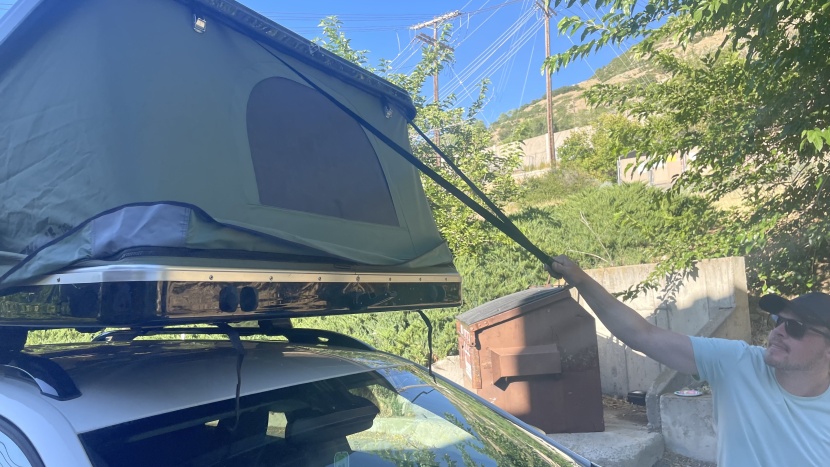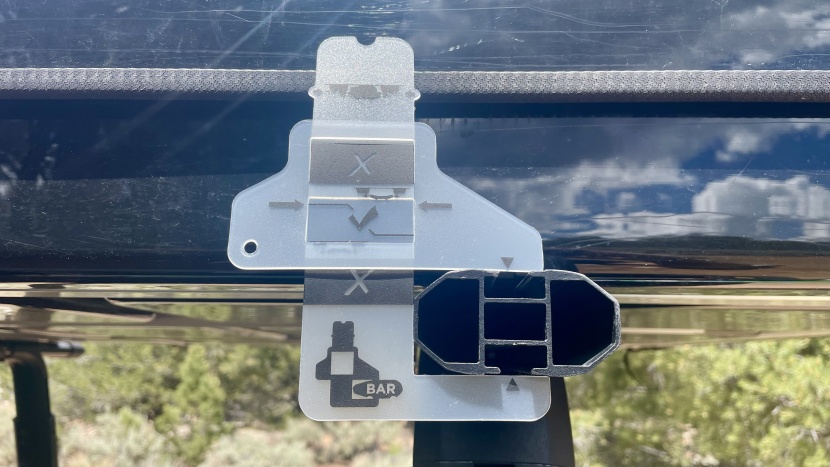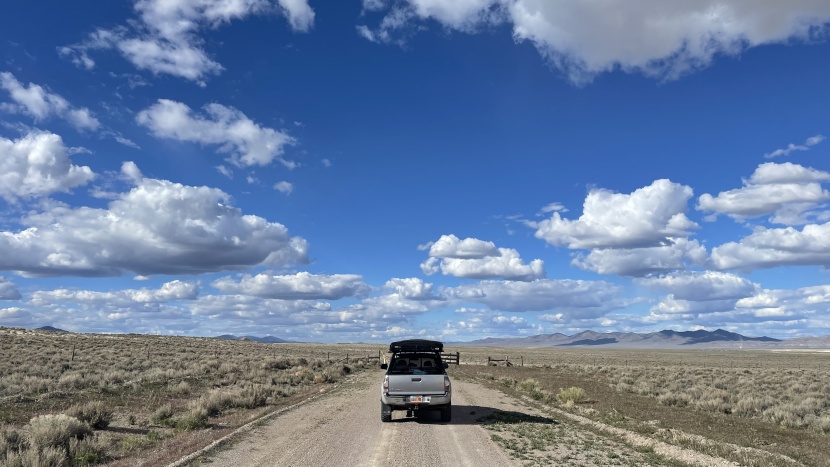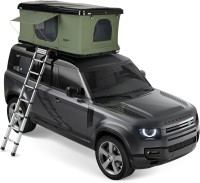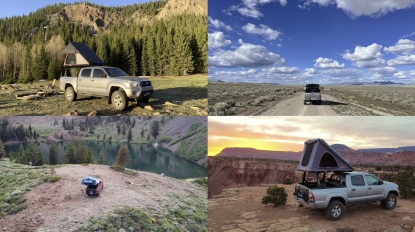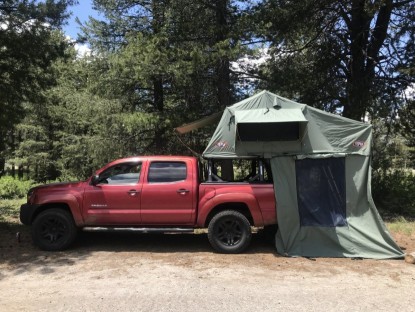Thule Basin Review

Our Verdict
Our Analysis and Test Results
The Thule Basin offers outdoor enthusiasts one of the classic hardshell rooftop tent forms – the box. While it earned a commendable overall score in our assessment, it didn't quite secure one of our coveted awards.
Space and Comfort
The biggest portion of our total score is dedicated to how comfortable each tent is inside. How did we acquire our data for this metric? You guessed it – we went camping! For this particular model, we headed to Grand Staircase National Monument in Southern Utah to spend five days and nights overlanding in the late spring.
Our team found the mattress in the Basin to be just as comfortable as any rooftop tent sleeping pad that we've tested to date. There are a few small luxuries that add to overall comfort, such as the four wall pockets and the overhead gear net. When you're looking at the tent from the outside, you might assume from the boxy design that there's tons of room inside; however, when we spent time in the tent, we found that the tent's roof is actually very low when compared to wedge-style pop-ups or even old-school fold-out models. Also, a lot of the space inside the tent isn't especially useful - specifically the four upper corners. While you could feasibly fashion some sort of added netting or storage in these areas, there isn't much use for it unless you have something that is three feet tall, skinny enough not to disrupt foot space, and needs to stand upright.
Durability
There is no question whether or not the Basin is tough enough for extended highway miles and foul weather while the tent is in travel mode. With a welded aluminum floor frame and a thick ABS shell, flying highway pebbles and low-hanging tree branches pose little to no threat of damaging the tent. The zippers are beefy, the clips are strong, and the pistons are housed within the tent, which protects them from the elements. However, we were surprised to learn that the canopy is composed of a 280g polyester/cotton blend ripstop. Other models use 320g, 420 D, and upwards of 600 D fabric – including tents in the Thule lineup. While the shell will certainly take the brunt of abuse in terms of raindrops and other things falling from the sky, the tent walls are still exposed to the sun, sand, and wind, not to mention the dozens or even hundreds of times being folded and unfolded as you use the tent. We'd like to see a stronger fabric used in future iterations of the Basin.
Ease of Conversion
Generally speaking, rooftop tents are much quicker to convert from travel to camping mode than any traditional tent that is pitched on the ground. However, because uncovering nuanced differences in details between outdoor products is our job, we consider the difference between a 30-second setup and a three-minute setup to be significant. The conversion process of the Thule Basin is relatively quick. To get ready to camp, you release two straps and a clip on each end; then, the pistons do the rest of the work following a gentle push. When it's time to pack up, a set of permanent straps aid in pulling the shell back down to the floor.
This model lost a couple of points for this metric for a couple of key reasons. When compared to a wedge pop-up, the number of steps for opening and closing the tent is doubled. Also, because both ends of the tent are extended, one end is over the hood of your vehicle, which means you'll need to stand in your door wells or lean on the front of your car to reach the strap and close the tent.
Ease of Assembly and Installation
The Basin is one of several rooftop tents we've tested over the years that comes ready to install right out of the box. Some tents have several steps that can be difficult and time-consuming, such as attaching the rails, attaching the ladder, or fishing the cover into place, but the Basin can go directly from its packaging to your rack. We love Thule's hardware that has been designed to attach when the tent is already in place – many other models require an awkward lifting step to slide the downward-facing bolts into place on either side of your crossbars. The instructions are clear and super easy to follow, and the tent even includes a tool for measuring which way to configure the hardware, as well as a torque wrench for getting the perfect amount of tightness when installing the tent.
Unfortunately, we had to dock the Basin a couple of points in the installation department because it is ridiculously heavy. At 176 pounds, lifting it onto a taller vehicle is no joke, and we'd highly recommend inviting an extra couple of friends over to help lift this beast. Thule also touts that the Basin can be used as a cargo box by removing the tent walls and mattress, but this process requires a ladder and some careful balance while the tent is on a car, and it's still really heavy when it's empty. Comparatively, the heaviest models in our review of cargo boxes are around 50 lbs.
Cover Convenience
As with the other hardshell models in our review, the Thule Basin earned a perfect score for its cover because the shell is both the cover and the roof of the tent. Considering that soft-shelled models have covers that need to be rolled up, folded, detached, and stowed away to camp and are then often awkward to reattach when it's time to go home, we find hard shell RTTs to be much more convenient overall.
Should You Buy the Thule Basin?
The Basin may be the perfect model for the right person. If you want a rugged-shelled rooftop tent that is relatively easy to set up and offers ample cubic volume, this is the one. But keep in mind that you're going to need some strong humans to install it and a powerful vehicle to haul it.
What Other Rooftop Tents Should You Consider?
If you like the idea of a hard shell RTT but want something that's lighter and quicker to convert, a wedge-style model such as the Roofnest Falcon 3 EVO is the way to go. For those who are looking to leave some space on their roof for other toys, the Foothill unfolds lengthwise rather than side to side, leaving lots of room for paddleboards, kayaks, and bicycles on your rack.
| Awards | |
|---|---|
| Price | $3,000 List |
Overall Score  |
|
| Star Rating | |
| Bottom Line | A symmetrical hardshell rooftop tent with some attractive features but a few shortcomings |
| Pros | Bombproof cover, innovative mounting hardware, includes torque wrench, doubles as cargo box |
| Cons | Very heavy, questionable canopy material, low tent ceiling |
| Rating Categories | Thule Basin |
| Space and Comfort (30%) | |
| Durability (25%) | |
| Ease of Conversion (20%) | |
| Ease of Assembly and Installation (15%) | |
| Cover Convenience (10%) | |
| Specifications | Thule Basin |
| Seasons | 4 |
| Weight | 176 lbs |
| Max Inside Height | 36 in |
| Pockets | 4, gear net |
| Windows | 2 ends |
| Floor Dimensions | 84 in x 55 in |
| Floor Area | 32 sq ft |
| Packed Size | 13 in x 58 in x 88 in |
| Floor Materials | Welded aluminum, ABS |
| Main Tent Materials | 260g poly-cotton ripstop |
| Rainfly Materials | n/a |
| Number of Poles | 4 |
| Design Type | Symmetrical pop-up |
| Capacity | 2-3 Person |
| Extras | Gear net |


